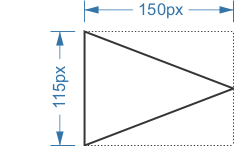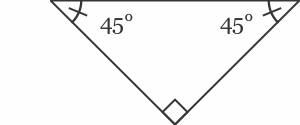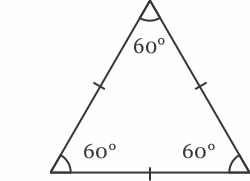https://github.com/jednano/postcss-triangle
PostCSS plugin to create a triangle.
https://github.com/jednano/postcss-triangle
equilateral isosceles postcss postcss-plugin right triangle
Last synced: 4 months ago
JSON representation
PostCSS plugin to create a triangle.
- Host: GitHub
- URL: https://github.com/jednano/postcss-triangle
- Owner: jednano
- License: mit
- Created: 2015-07-30T23:57:36.000Z (almost 10 years ago)
- Default Branch: master
- Last Pushed: 2017-11-02T17:05:06.000Z (over 7 years ago)
- Last Synced: 2025-03-01T01:11:10.182Z (4 months ago)
- Topics: equilateral, isosceles, postcss, postcss-plugin, right, triangle
- Language: TypeScript
- Homepage:
- Size: 104 KB
- Stars: 59
- Watchers: 3
- Forks: 3
- Open Issues: 0
-
Metadata Files:
- Readme: README.md
- Changelog: CHANGELOG.md
- License: LICENSE
Awesome Lists containing this project
README
# postcss-triangle

[](https://www.npmjs.org/package/postcss-triangle)
[](https://www.npmjs.org/package/postcss-triangle)
[](https://travis-ci.org/jedmao/postcss-triangle)
[](https://codecov.io/gh/jedmao/postcss-triangle)
[](https://gemnasium.com/github.com/jedmao/postcss-triangle)
[](https://nodei.co/npm/postcss-triangle/)
[PostCSS](https://github.com/postcss/postcss) plugin to create a triangle.
## Introduction
Creating triangles in CSS [is entirely complicated](https://css-tricks.com/snippets/css/css-triangle/), but it doesn't have to be!
Using this plugin, you can create three different types of triangles:
```css
.isosceles-triangle {
triangle: pointing-;
width: ;
height: ;
background-color: ;
}
.right-isosceles-triangle {
triangle: right-iso pointing-;
: ;
background-color: ;
}
.equilateral-triangle {
triangle: equilateral pointing-;
: ;
background-color: ;
}
```
### Triangle types
All triangle types have the following rules/caveats:
- You must specify a direction (`pointing-up`, `pointing-down`, `pointing-left` or `pointing-right`).
- You must provide a separate `background-color` declaration. This will transpile into a `border-color` in the opposite direction in which your triangle points. The `background-color` helps you forget about all that nonsense and just specify what _appears_ to be the background color, visually.
- Unfortunately, there is no way to set a triangle's actual `border` at this time. I considered using the `::before` pseudo-class to achieve this; however, it had a defect that was cutting it in half and I gave up. Feel free to submit a pull request with this feature if you have a solution for it.
Now, on to the triangle types!
#### Isosceles

This is the default triangle type. It has two angles the same and two sides the same. The triangle will fit snug inside the `width` and `height` box that you define. Here's how you create one:
```css
.isosceles-triangle {
triangle: pointing-right;
width: 150px;
height: 115px;
background-color: red;
}
```
This transpiles into:
```css
.isosceles-triangle {
width: 0;
height: 0;
border-style: solid;
border-color: transparent;
border-width: 57.5px 0 57.5px 150px;
border-left-color: red;
}
```
[See it on CodePen!](http://codepen.io/jedmao/details/yNZJxE/)
This creates a triangle with `width: 150px; height: 115px;` and pointing right.
The isosceles triangle has the following rules/caveats:
- You must specify both a `width` and `height`.
#### [Right-Isosceles](http://mathworld.wolfram.com/IsoscelesRightTriangle.html)

This triangle has two 45° angles and one 90° angle. The 90° angle is the direction the triangle points. This is great if you want to render a triangle with the sharpest edge possible, because it follows the pixels on your screen exactly, without any additional anti-aliasing.
Iso is short for isosceles, because it's not the most fun word to spell/type; rather, it's only fun if you know how to spell it!
Here's how you create one:
```css
.right-isosceles-triangle {
triangle: right-iso pointing-down;
width: 250px;
background-color: red;
}
```
This transpiles into:
```css
.right-isosceles-triangle {
width: 0;
height: 0;
border-style: solid;
border-color: transparent;
border-width: 125px 125px 0;
border-top-color: red;
}
```
[See it on CodePen!](http://codepen.io/jedmao/details/gpqMZg/)
This creates a triangle with `width: 250px; height: 125px;` and pointing down.
The right-isosceles triangle has the following rules/caveats:
- You must specify either a `width` or a `height`.
- You may not specify both a `width` and `height`, because it will calculate the missing dimension for you.
#### [Equilateral](https://en.wikipedia.org/wiki/Equilateral_triangle)

This triangle's angles are all the same (60°). This means all sides are the same length as well. Here's how you create one:
```css
.equilateral-triangle {
triangle: equilateral pointing-up;
height: 100px;
background-color: red;
}
```
This transpiles into:
```css
.equilateral-triangle {
width: 0;
height: 0;
border-style: solid;
border-color: transparent;
border-width: 0 57.73503px 100px;
border-bottom-color: red;
}
```
[See it on CodePen!](http://codepen.io/jedmao/details/waNWRq/)
This creates a triangle with `width: 115.47006px; height: 100px;` and pointing up.
The equilateral triangle has the following rules/caveats:
- You must specify either a `width` or a `height`.
- You may not specify both a `width` and `height`, because it will calculate the missing dimension for you.
That's about it!
## Installation
```
$ npm install postcss-triangle
```
## Usage
### JavaScript
```js
postcss([ require('postcss-triangle')(/* options */) ]);
```
### TypeScript
```ts
import * as postcssTriangle from 'postcss-triangle';
postcss([ postcssTriangle(/* options */) ]);
```
## Options
### unitPrecision
Type: `number`
Required: `false`
Default: `5`
When using `right-iso` or `equilateral` triangles, calculations will be performed that will most likely turn into fractions. This option allows you to control the number of significant digits after the decimal point (e.g., `1.2354` with a `unitPrecision` of `2` would yield `1.24`, rounding it off nicely).
## Testing
Run the following command:
```
$ npm test
```
This will build scripts, run tests and generate a code coverage report. Anything less than 100% coverage will throw an error.
### Watching
For much faster development cycles, run the following commands in 2 separate processes:
```
$ npm run build:watch
```
Compiles TypeScript source into the `./dist` folder and watches for changes.
```
$ npm run watch
```
Runs the tests in the `./dist` folder and watches for changes.